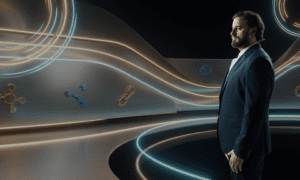Introduction
In the bustling world of digital content creation, explainer videos stand out as dynamic tools for conveying complex ideas in an engaging and accessible manner. Yet, behind every successful explainer video lies a meticulously crafted storyboard. A storyboard serves as the blueprint, guiding the production process from concept to completion. In this comprehensive guide, we delve into the step-by-step mastery of storyboarding for professional explainer videos, unveiling the secrets to captivating storytelling and seamless visual execution.
Understanding the Essence of Storyboarding
Before delving into the intricacies of storyboarding, it’s essential to grasp its fundamental significance. A storyboard essentially functions as a visual representation of the script, breaking down each scene into sequential frames. It provides a visual roadmap for the entire video, outlining the flow of narration, visuals, and transitions. By visualizing the narrative structure beforehand, creators can streamline the production process and ensure coherence and clarity in the final output.
Crafting a Compelling Narrative Arc
At the heart of every successful explainer video lies a compelling narrative arc. The narrative arc serves as the backbone of the storyboard, guiding viewers through a coherent storyline from introduction to resolution. To craft a compelling narrative arc, creators must first identify the core message or objective of the video. Whether it’s explaining a product, elucidating a concept, or telling a story, clarity of purpose is paramount.
Segmentation: Breaking Down the Story
Once the core message is established, the next step is segmentation. Segmentation involves breaking down the story into distinct scenes or segments, each contributing to the overarching narrative. Each segment should encapsulate a specific idea or concept, ensuring clarity and coherence in the storytelling process. Transition words such as “Firstly,” “Next,” and “Moreover” play a pivotal role in facilitating smooth transitions between segments, enhancing the flow of the narrative.
Visualizing the Story: Sketching the Frames
With the narrative structure in place, it’s time to visualize the story through sketching. Sketching involves creating rough outlines or frames for each scene, capturing key visuals, characters, and actions. While precision is not paramount at this stage, emphasis should be placed on conveying the essence of each scene effectively. Utilizing transition words like “Furthermore,” “In addition,” and “Consequently” within the narrative helps maintain coherence and progression, guiding viewers seamlessly from one frame to the next.
Adding Depth: Incorporating Visual Elements
Once the sketches are finalized, it’s time to add depth and detail to the storyboard by incorporating visual elements. Visual elements encompass everything from color schemes and typography to illustrations and animations. Each visual element should serve to enhance the narrative and reinforce key concepts, ensuring visual cohesion throughout the video. Transition words such as “Similarly,” “Likewise,” and “Subsequently” aid in linking visual elements cohesively, creating a visually engaging experience for viewers.
Fine-Tuning: Refining the Storyboard
As the storyboard takes shape, it’s crucial to engage in a process of continual refinement and iteration. Fine-tuning involves reviewing each scene meticulously, assessing its effectiveness in conveying the intended message. Paying attention to pacing, framing, and composition is essential during this phase, ensuring that each frame contributes meaningfully to the overall narrative. Transition words like “On the contrary,” “In contrast,” and “Nevertheless” can be employed to introduce alternative perspectives or emphasize key points, adding depth and complexity to the storytelling.
Collaboration and Feedback: Iterating Towards Excellence
Storyboarding is inherently a collaborative process, requiring input and feedback from various stakeholders. Whether it’s the scriptwriter, animator, or client, soliciting feedback at every stage of the process is invaluable. Constructive criticism helps identify areas for improvement and fine-tune the storyboard for maximum impact. Transition words such as “Additionally,” “Furthermore,” and “Moreover” facilitate the integration of feedback seamlessly, fostering a spirit of collaboration and continuous improvement.
Conclusion
In conclusion, mastering the art of storyboarding is essential for creating professional explainer videos that captivate and resonate with audiences. By understanding the essence of storyboarding, crafting a compelling narrative arc, visualizing the story, incorporating visual elements, fine-tuning the storyboard, and embracing collaboration and feedback, creators can unlock the full potential of their explainer videos. So, embark on your storytelling journey today and elevate your explainer videos to new heights of excellence.



































